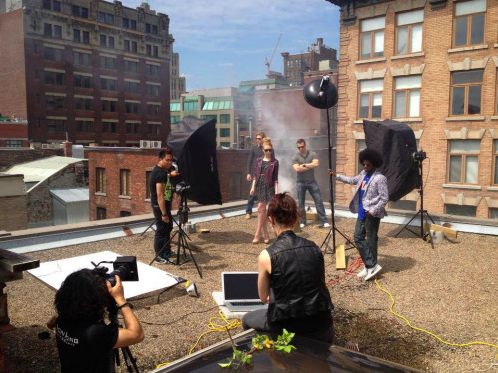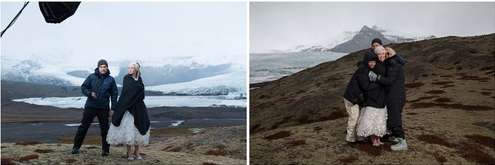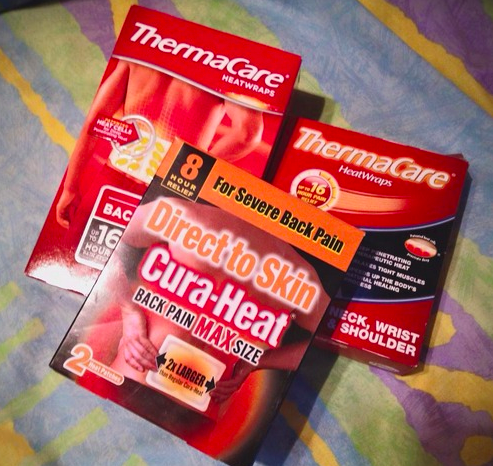My school teacher, Miss Haynes, once asked my class – “what is risk?” then separated us into groups to ponder the question. Of course being fifteen year old kids, the height of our discussion considered being caught doing things that we shouldn’t, whether to take our umbrellas to school on a cloudy day or about wearing an outfit that wasn’t already ‘okay’d’ by our peers to a social event.
I didn’t really think too hard about the subject, I didn’t consider it of interest at the time. But then she went on to tell us how her friend answered the same question she’d asked us, on his philosophy exam paper. When asked “what is risk?”, he had simply written these words; “Risk is…”. I was in awe. Was it pure genius or sheer stupidity? His entire education put on the line by the placement of two short words…that so cleverly answered the question entirely.
So what is risk? The dictionary classifies it as exposure to danger, harm or loss. Putting oneself in jeopardy is infinitely transferable to the world of photography. So today, we look at just a few of those areas and ways where we can help balance out the potential of negative risk.
Health risk.
For every model there is a health risk at every shoot. Only this week, I have bathed my feet in saltwater to heal an inflamed toe that were squashed into shoes too small for my size and have cringed as I watched a makeup artist reuse the mascara wand that came with the bottle, time and time again dunked into the liquid of cross contamination. Unclean brushes, reused lashes and liners from one eyeball to the next – it’s all a worry for a models health.
Other health risk concerns come from the weather. Hot days and overcast clouds can cause sunburn leading to far more serious and permanent skin damage for everyone. However SPF protection appears reflective on camera and often designer clothes prevent the use of sunblock in fear of damaging the clothes.
From personal experience as one who burns easily, I highly recommend P20 sun cream. Applied an hour before requirement, it soaks into the skin leaving little residue, spread evenly and generously to areas closest to exposure such as the shoulders and backs of legs. I’d advise avoiding the face as the make up should provide a low form of protection and allows the makeup to sit right (as said, SPF appears reflective on camera). Instead, sheltering wherever possible is perhaps more practical (even under a reflector between shots can make a difference). For photographers, sunblock is recommended as part of your essential kit – as important as your camera, lenses and batteries, to protect yourself from the sun when out on location all day in the heat.
In colder climates, models should be kept warm for as long as possible. Setting up the lights, preparing the composition, testing the lenses – everything should be set before the model de-robes. The cold is something that will affect your models performance so keeping him or her comfortable is absolutely your priority for the best pictures you can produce together as a team. Having an assistant on set ready to pounce with a blanket and hot water bottle is massively beneficial to a shoot and one your model will think highly of you for.
Warming up in Iceland; behind the scenes photographs by Ian Mears, taken at the Miss Aniela Fashion Shoot Experience 2014.
For photographers, layers are absolutely the key. When you get into a flow and the pressure is on, nine times out of ten you’ll warm up and require far less jumpers than you set out with. However, like everyone else, remember you are exposed to the elements on location and whilst the team are covering the models in blankets, you need to take care of yourself. The risk of hypothermia is as high as anyone elses and I recommend the use of self warming heat patches, as well as stretching your muscles before going out. Equipment is heavy and contorting your body into interesting shapes to get that crucial shot, will definitely have its effect on your bones. Take care of your body to reap the benefits by keeping your muscles warmed up where you can.
Tried and tested, Thermacare are the best brand I have found and cheapest to purchase in bulk online. Ideal for photographers and excellent for models who are wearing clothes that can hide them;
Travel risk.
Working away from home always comes with its own risks. Booking accommodation and then the client cancels…transport is late or won’t start…getting lost in an area you don’t know – the list goes on and on and I can understand why many won’t work outside of their own area. But for me, travel and work go hand in hand. If I don’t travel, I don’t get the work and it’s really that simple. So although I was scared at the start, I’ve learnt how to manage my fears and be proactive about my adventures, being sensible about my safety because I am essentially meeting strangers in unknown places.
First and foremost, I always tell someone where I’m going and who I’ll be with, as well as requesting private references from the people who feature in their portfolio in advance. If they fail the private reference check, I don’t even consider the job. Note: please remember that models and photographers may leave a positive public reference online, but it is always good to request a private statement with absolute discretion for a true notion of honesty before agreeing to the work.
If I am driving; I have the address of where I’m going pre-programmed into my satnav with a screenshot of google maps from the area in case it goes wrong. I also have the phone number of the person who has booked me and the hotel reception where I’m staying, with my phone charged up to the maximum level (although signal is variable in the countryside). I check my oil, water and fuel levels before leaving and always ensure I have my breakdown recovery service card with me in case of emergencies.
If I am travelling via public transport; I have the times of my specific train written down in my diary, as well as the earlier and later either side of the designated departure and arrival in case of issues. I also ensure I am aware of where the changeovers are and how long I have in each place, plied with food and drink for the journey. I always check the cost of travel before agreeing to any booking as sometimes the expenses can outweigh the earnings. It is advisable to list for yourself what is manageable to carry, before taking the option of public transport.
It’s also in the interest of both models and photographers to consider other work in the area to make the most of the trip in terms of wages against expenses. Which leads me onto my final point…
Financial risk.
Unsurprisingly, the one we seem to worry about most is often money. Committing to a shoot means that there is money involved – even for a collaboration there is often a studio/location booked, clothes sourced, makeup bought and travel tickets paid for. If the shoot fails to happen, there is always money lost; if only for the day that could have been spent earning elsewhere.
Committing to a shoot must be definate. The expenses should be weighed up, the travel considered, the distance examined and the requirements reviewed – if all adhere to it, this is the only way to avoid cancellation risk. However, as we all know, this is not always the case so it is important to remind all team members of everything involved before they commit, with an agreement in place if the weather will affect the go ahead.
Even when a shoot takes place, there is still financial risk to all team members. During a collaboration, if the shoot does not go as well as expected, the money invested into it becomes a huge loss. The money, ideas and time sacrificed feel wasted if the images don’t come out as hoped. For this reason, it’s important to to do as much preparation as possible in advance. For example, scouting locations, checking references on each other, building moodboards to share with the team, sharing ideas and images of the sourced costumes and proposed makeup and hair – even suggesting poses to grasp a vibe of the concept is beneficial for all involved.
With all the risks involved in the industry, it is best to protect yourself through knowledge. Your business is your life and your insurance is your preparation skills. Ask questions. Learn what is acceptable. Be proactive and organised.
If I can give any good advice to new models and photographers it would be to check up on references so you know what to expect, be clear in your communication especially concerning times and levels (call sheets and moodboards are brilliant) and to be health conscious for one another’s well being at all times.
Yet with all the risks that are involved, remember…not every risk is a bad one.
“…you ask ‘what if I fall?’ oh but my darling, what if you fly?” (Erin Hanson)






